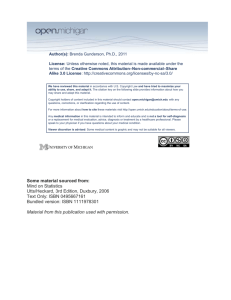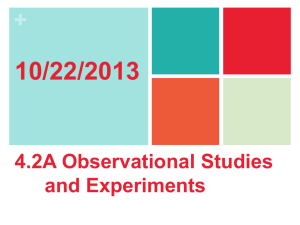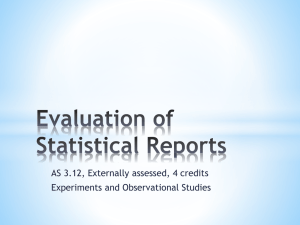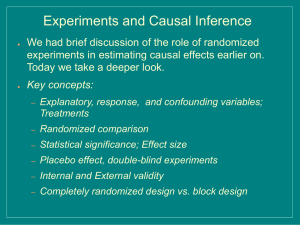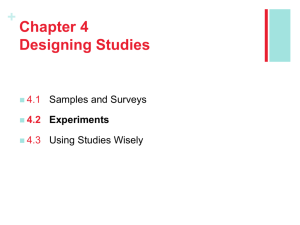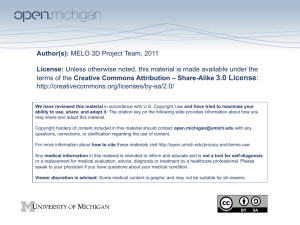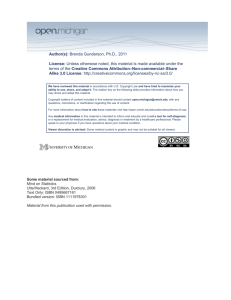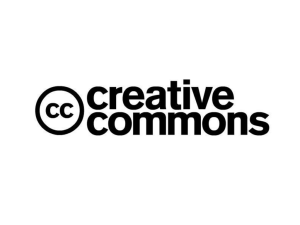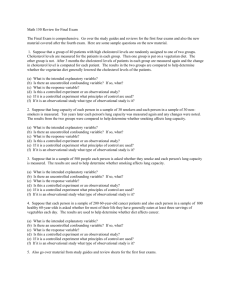06-f11-bgunderson-iln-gatherusefuldata
advertisement
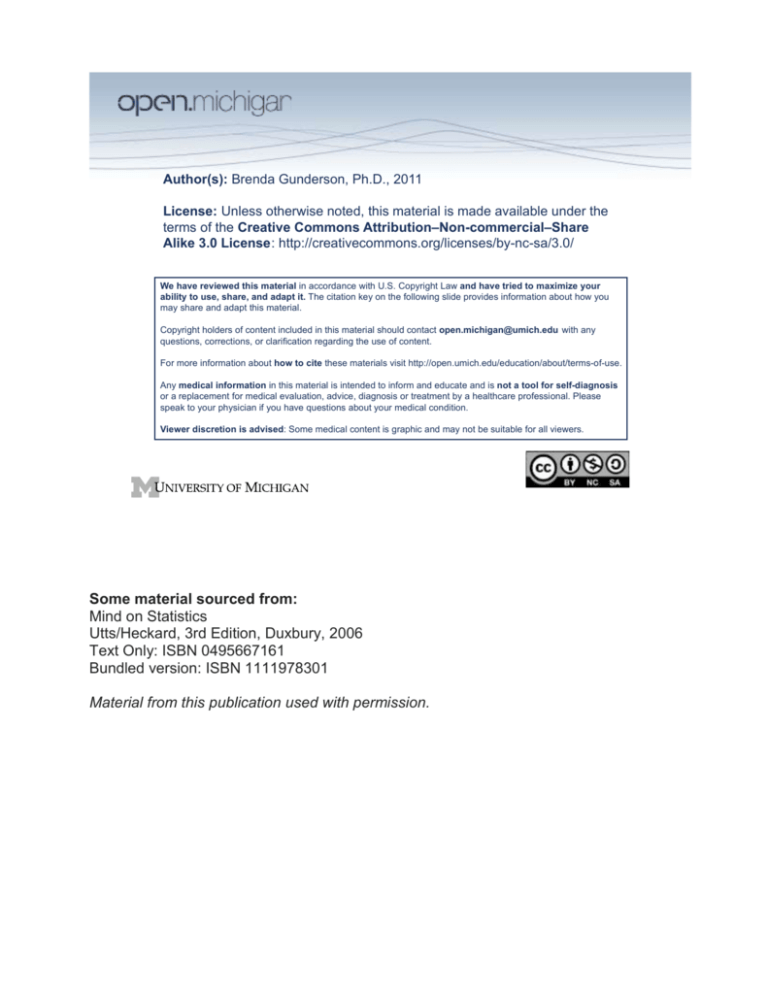
Author(s): Brenda Gunderson, Ph.D., 2011
License: Unless otherwise noted, this material is made available under the
terms of the Creative Commons Attribution–Non-commercial–Share
Alike 3.0 License: http://creativecommons.org/licenses/by-nc-sa/3.0/
We have reviewed this material in accordance with U.S. Copyright Law and have tried to maximize your
ability to use, share, and adapt it. The citation key on the following slide provides information about how you
may share and adapt this material.
Copyright holders of content included in this material should contact open.michigan@umich.edu with any
questions, corrections, or clarification regarding the use of content.
For more information about how to cite these materials visit http://open.umich.edu/education/about/terms-of-use.
Any medical information in this material is intended to inform and educate and is not a tool for self-diagnosis
or a replacement for medical evaluation, advice, diagnosis or treatment by a healthcare professional. Please
speak to your physician if you have questions about your medical condition.
Viewer discretion is advised: Some medical content is graphic and may not be suitable for all viewers.
Some material sourced from:
Mind on Statistics
Utts/Heckard, 3rd Edition, Duxbury, 2006
Text Only: ISBN 0495667161
Bundled version: ISBN 1111978301
Material from this publication used with permission.
Attribution Key
for more information see: http://open.umich.edu/wiki/AttributionPolicy
Use + Share + Adapt
{ Content the copyright holder, author, or law permits you to use, share and adapt. }
Public Domain – Government: Works that are produced by the U.S. Government. (17 USC §
105)
Public Domain – Expired: Works that are no longer protected due to an expired copyright term.
Public Domain – Self Dedicated: Works that a copyright holder has dedicated to the public domain.
Creative Commons – Zero Waiver
Creative Commons – Attribution License
Creative Commons – Attribution Share Alike License
Creative Commons – Attribution Noncommercial License
Creative Commons – Attribution Noncommercial Share Alike License
GNU – Free Documentation License
Make Your Own Assessment
{ Content Open.Michigan believes can be used, shared, and adapted because it is ineligible for copyright. }
Public Domain – Ineligible: Works that are ineligible for copyright protection in the U.S. (17 USC § 102(b)) *laws in
your jurisdiction may differ
{ Content Open.Michigan has used under a Fair Use determination. }
Fair Use: Use of works that is determined to be Fair consistent with the U.S. Copyright Act. (17 USC § 107) *laws in your
jurisdiction may differ
Our determination DOES NOT mean that all uses of this 3rd-party content are Fair Uses and we DO NOT guarantee that
your use of the content is Fair.
To use this content you should do your own independent analysis to determine whether or not your use will be Fair.
Stat 250 Gunderson Lecture Notes
Chapter 6: Gathering Useful Data for Examining Relationships
A knowledge of statistics is like a knowledge of foreign languages or of algebra; it may prove
of use at any time under any circumstances.
Bowley, Arthur L.
Elements of Statistics Part I, Chpt I (p. 4)
In Chapter 6 we focus on ways to collect data in order to examine relationships between variables.
We will learn that the way in which a study is conducted affects our ability to support whether a
cause-and-effect relationship exists.
6.1 Speaking the Language of Research Studies
Two Basic Types of Research Studies: Observational or Experimental
Definitions:
Observational Studies: The researchers simply observe or measures the participants
(about opinions, behaviors, or outcomes) and do not assign any treatments or
conditions. Participants are not asked to do anything differently.
Experiments: The researchers manipulate something and measure the effect of the
manipulation on some outcome of interest. Often participants are randomly assigned
to the various conditions or treatments.
Most studies, either observational or experimental, are interested in learning of the
effect of one variable (called the explanatory variable) on another variable (called the
response or outcome variable).
A confounding variable is a variable that both affects the response variable and also is
related to the explanatory variable. The effect of a confounding variable on the
response variable cannot be separated from the effect of the explanatory variable.
Confounding variables might be measured and accounted for in the analysis, or they
could be unmeasured lurking variables. Confounding variables are especially a problem
in observational studies. Randomized experiments help control the influence of
confounding variables.
From Utts, Jessica M. and Robert F. Heckard. Mind on Statistics, Fourth Edition. 2012.
Used with permission.
Try It! Student’s Health Study
A researcher at the University of Michigan believes that the number of times a student visits the
Student Health Center (SHC) is strongly correlated with the student’s type of diet and their amount of
weekly exercise. The researcher selected a simple random sample of 100 students from a total of
3,568 students that visited SHC last month and first recorded the number of visits made to the SHC
for each selected student over the previous 6 months. After recording the number of visits, he looked
29
into their records and classified each student according to the type of diet (Home-Cooked Food / Fast
Food) and the amount of exercise (None / Twice a Week / Everyday).
a. Is this an observational study or a randomized experiment?
b. What are the explanatory and response variables?
Try It! External Clues Study
A study examined how external clues influence student performance. Undergraduate students were
randomly assigned to one of four different forms for their midterm exam. Form 1 was printed on
blue paper and contained difficult questions, while Form 2 was also printed on blue paper but
contained simple questions. Form 3 was printed on red paper, with difficult questions, and Form 4
was printed on red paper with simple questions. The researchers were interested in the impact that
color and type of question had on exam score (out of 100 points).
a. This research is based on:
an observational study
a randomized experiment
b. Complete the following statements by circling the appropriate answer.
i.
The color of the paper is a(n)
response
explanatory
and its type is (circle one)
categorical
quantitative.
response
explanatory
categorical
quantitative.
ii. The exam score is a(n)
and its type is (circle one)
variable
variable
c. Fill in the blank. Suppose the students in the “blue paper” group were mostly upper-classmen and
the students in the “red paper” group were mostly first and second-year students. The variable
“class rank” is an example of a(n)
variable.
Sections 6.2 – 6.3 discuss key ideas for designing a good experiment and a good observational study.
Section 6.4 presents a list of difficulties and disasters in experiments and observational studies and
provides good examples of each.
You need to know about these ideas (control groups, placebos, blinding, matched-pair designs,
interacting variables, biases like the Hawthorne effect, and more – so read these sections!
Where are we going?
We have a population (a basket) that we cannot examine but we want to learn something about it
- so we will take a sample - preferably it will be a random sample.
We will use the sample to estimate the things we wanted to know about the population - we will
use the sample results to test theories about the population and make some decisions.
30
Since the sample is just a part of the population there will be some uncertainty about the
estimates and decisions we make. To measure and quantify that uncertainty we turn to
PROBABILITY! So we turn next to Chapter 7. Chapters 3 and 4 will be combined with later
chapters that also cover those ideas but in more detail.
31
Additional Notes
A place to … jot down questions you may have and ask during office hours, take a few extra notes, write out an
extra practice problem or summary completed in lecture, create your own short summary about this chapter.
32

